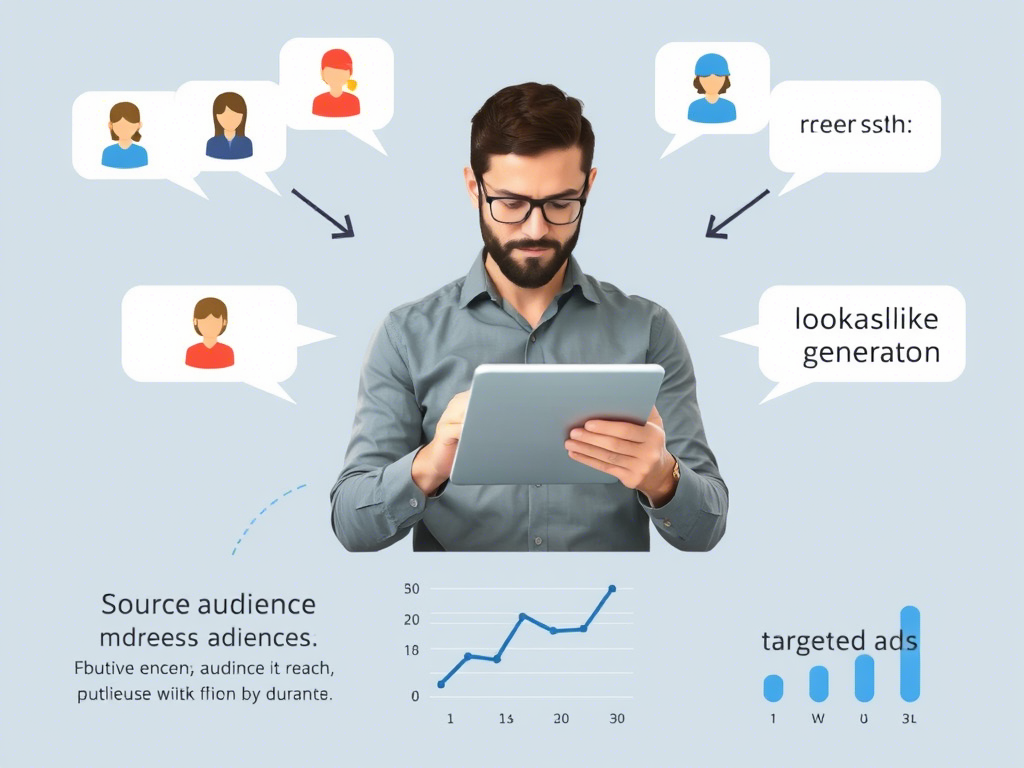In today’s digital age, social media is more than just a platform for sharing photos and updates—it’s a powerful marketing tool that can help businesses grow exponentially.
But with so many users and advertisers competing for attention, how do you ensure your campaigns reach the right people? Enter lookalike audiences .
This advanced targeting feature allows you to tap into untapped potential by finding new customers who resemble your existing ones.
In this article, we’ll explore what lookalike audiences are, why they matter, and most importantly, how you can use them effectively to expand your reach on social media platforms like Facebook, Instagram, and LinkedIn.
Whether you’re a small business owner or a seasoned marketer, mastering lookalike audiences could be the key to unlocking growth in 2023. So, let’s dive in and discover how leveraging these tools can transform your social media strategy!
What Are Lookalike Audiences?
At its core, a lookalike audience is an automated way of expanding your customer base by identifying individuals similar to those already interacting with your brand. These “similar” people share characteristics such as demographics, interests, behaviors, and even purchasing patterns with your current audience.
By creating a lookalike audience, you’re essentially asking the platform to find more people who are likely to engage positively with your content.
For instance, imagine you have a list of email subscribers who frequently purchase from your online store. You upload this list to Facebook Ads Manager, and it generates a lookalike audience based on these high-value customers. The result? A group of new prospects who behave similarly to your best buyers.
Here’s where things get interesting: according to Facebook, lookalike audiences tend to perform better than random targeting because they align closely with your ideal customer profile. So whether you’re promoting a new product launch or driving traffic to your website, using lookalike audiences ensures your message reaches the right ears.
Why Lookalike Audiences Matter
The success of any marketing campaign hinges on reaching the right audience at the right time. Traditional advertising methods often rely on broad demographics, which may not yield optimal results. On the other hand, lookalike audiences provide precision targeting, increasing the likelihood of conversions.
Let’s break down some reasons why lookalike audiences are essential:
- Higher Conversion Rates : Since lookalike audiences mirror your existing customers, they’re already predisposed to liking your products or services.
- Cost-Effective : Targeting relevant audiences reduces wasted ad spend by focusing only on qualified leads.
- Scalability : Once you’ve identified a profitable source (e.g., your top-performing email list), you can scale your efforts by generating multiple lookalike audiences across different regions or affinity levels.
- Data-Driven Insights : Platforms like Facebook offer detailed analytics about your lookalike audiences, helping you refine future strategies.
To put this into perspective, consider a study conducted by Hootsuite, which found that companies using lookalike audiences saw up to a 60% increase in click-through rates compared to generic ads. Numbers like these underscore the importance of incorporating lookalike audiences into your overall strategy.
Step-by-Step Guide to Creating Lookalike Audiences
Now that you understand their value, let’s walk through the process of setting up lookalike audiences step by step:
1. Define Your Source Audience
Your source audience serves as the foundation for building your lookalike audience. Common options include:
- Website visitors tracked via pixels
- Email lists uploaded to the platform
- Existing customers segmented by purchase history
Choose a source audience that represents your highest-quality leads or customers. For example, if you run an e-commerce site, focus on users who completed purchases rather than casual browsers.
2. Upload Your Data
Once you’ve selected your source audience, upload it to your chosen platform. Most major social networks allow bulk uploads via CSV files or direct integrations with CRM systems. Ensure your data complies with privacy regulations to avoid complications later.
3. Select Affinity Level
After uploading your source audience, specify the percentage overlap between your lookalike audience and the source audience. Typically, platforms offer ranges from 1% to 10%. A 1% overlap targets users most similar to your source audience, while higher percentages broaden the scope but reduce specificity.
Pro tip: Start with a smaller affinity level (e.g., 1%) to gauge performance before scaling up.
4. Choose Geographic Location
Limit your lookalike audience to specific countries or regions depending on your business goals. If you sell globally, consider creating separate lookalike audiences for each market to account for regional differences.
5. Launch and Monitor
Finally, integrate your newly created lookalike audience into your ad campaigns. Keep a close eye on metrics like engagement, conversion rate, and cost per acquisition to assess effectiveness. Adjust parameters as needed to optimize outcomes.
By following these steps, you’ll set yourself up for success when utilizing lookalike audiences.
Best Practices for Maximizing Results
While setting up lookalike audiences might seem straightforward, there are nuances to keep in mind to maximize their impact. Here are some best practices:
Refine Your Source Audience
Ensure your source audience accurately reflects your target market. Avoid mixing disparate groups; instead, segment carefully based on behavior, location, or other factors.
Test Different Parameters
Experiment with varying affinity levels and geographic locations to identify what works best for your brand. Remember, no two businesses are identical, so customization is key.
Combine with Retargeting
Use lookalike audiences alongside retargeting campaigns to capture both warm and cold leads. For example, show tailored ads to users within your lookalike audience while simultaneously reminding past visitors about abandoned carts.
Leverage Platform-Specific Features
Each platform offers unique advantages. For instance, LinkedIn excels at B2B targeting, while TikTok appeals to younger demographics. Tailor your approach accordingly.
By adhering to these guidelines, you’ll unlock the full potential of lookalike audiences.
Common Challenges and How to Overcome Them
Despite their benefits, lookalike audiences aren’t without challenges. Below are some common hurdles and solutions:
Insufficient Data
If your source audience lacks sufficient size or diversity, the resulting lookalike audience may underperform. To mitigate this, invest in growing your database through lead magnets, contests, or partnerships.
Overgeneralization
Using overly broad criteria can dilute the effectiveness of your lookalike audience. Always aim for quality over quantity by refining your segments.
Privacy Concerns
As data protection laws tighten, ensure compliance with regulations like GDPR or CCPA. Transparent communication with your audience builds trust and minimizes legal risks.
Addressing these issues proactively will enhance your chances of achieving desired results.
Conclusion
Lookalike audiences represent one of the most potent weapons in a modern marketer’s arsenal. They enable precise targeting, improve ROI, and foster scalable growth—all critical components of successful social media campaigns. By understanding how to create and utilize lookalike audiences effectively, you position yourself ahead of competitors still relying on outdated techniques.
We encourage you to take action today. Identify your strongest source audience, experiment with various settings, and track your progress diligently. And don’t forget to share your experiences in the comments below—we’d love to hear how lookalike audiences transformed your strategy!
Ready to give it a try? Let us know how it goes!




